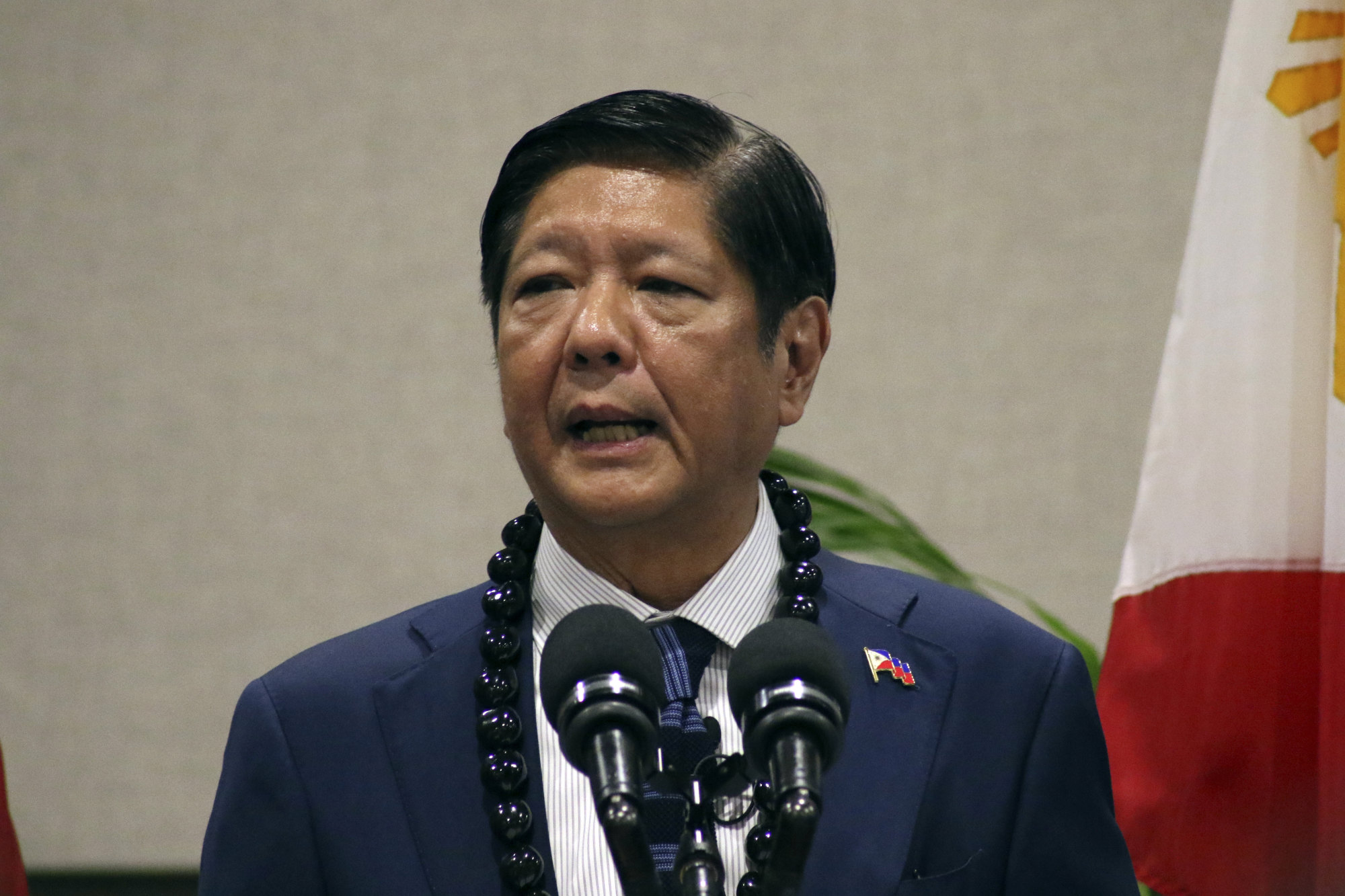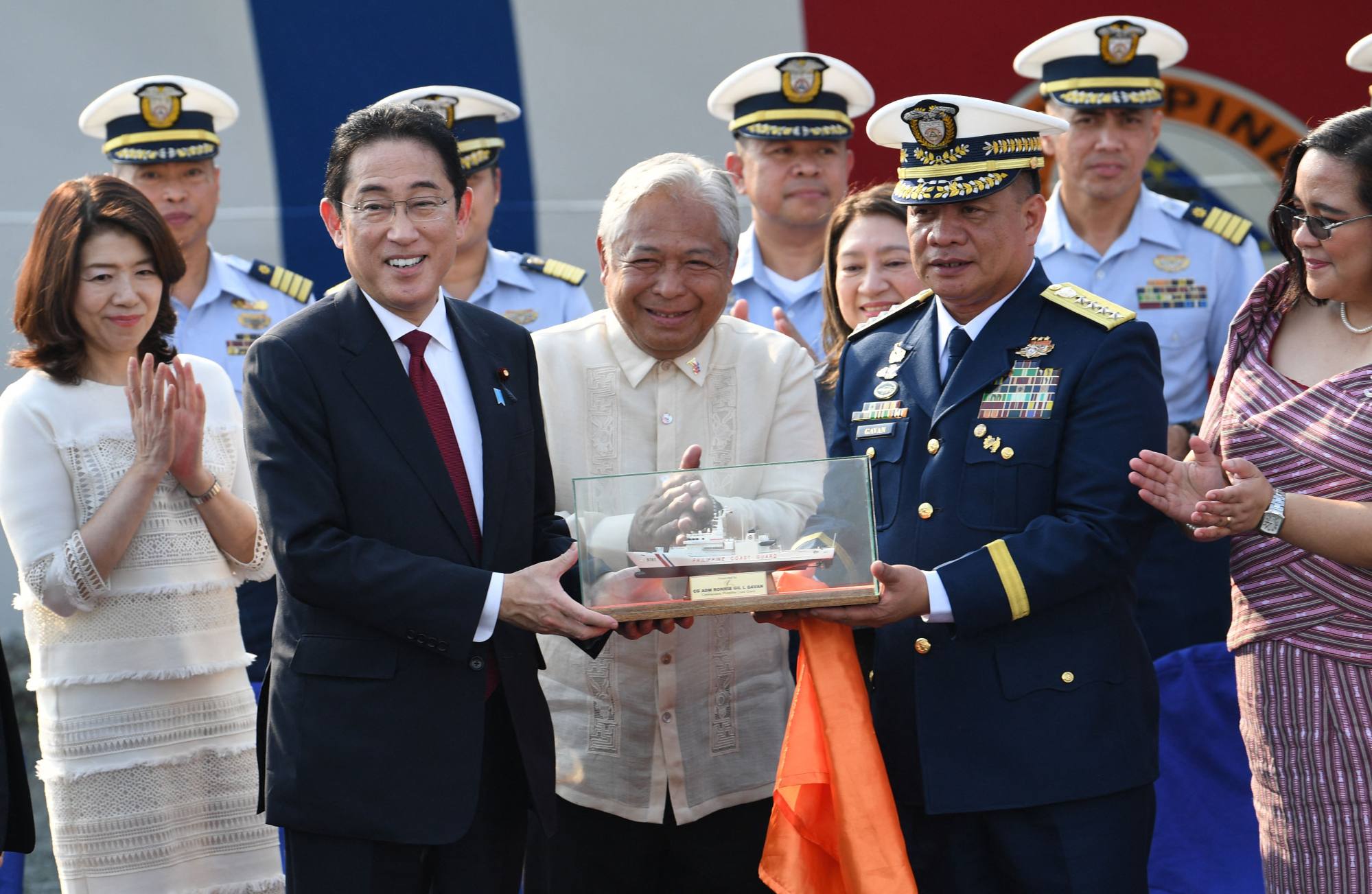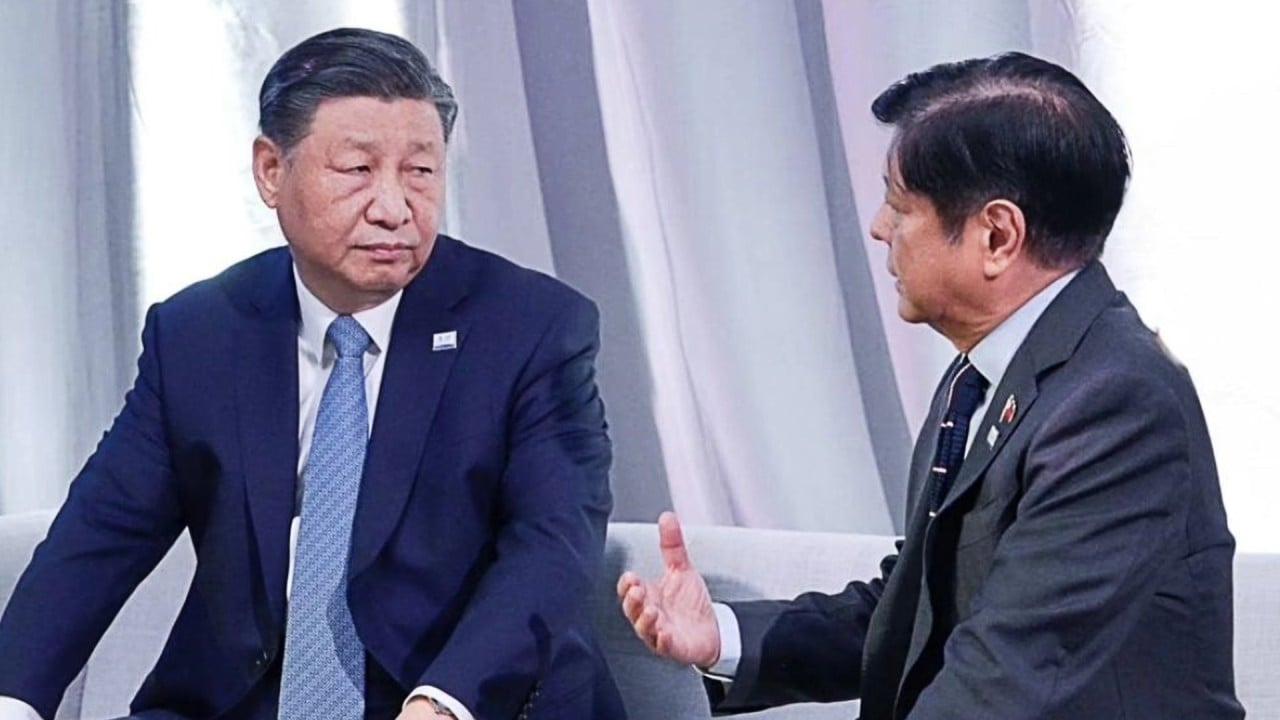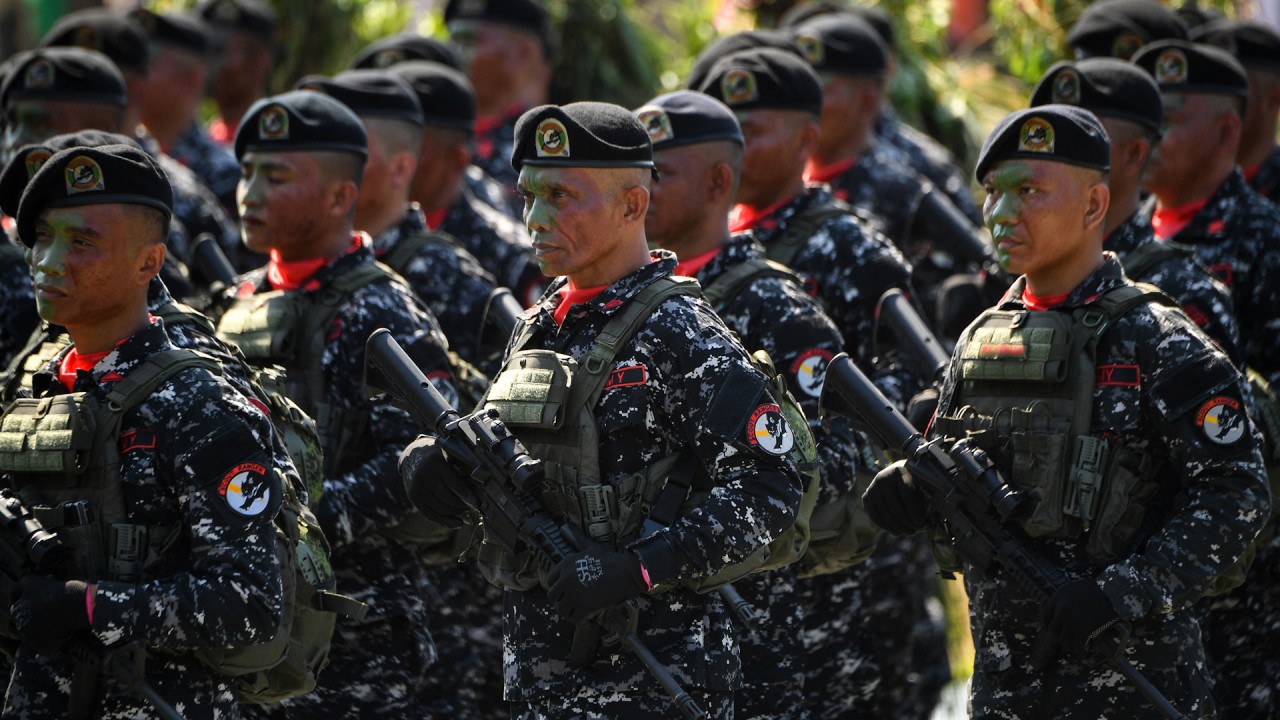Collin Koh, a research fellow at the S. Rajaratnam School of International Studies in Singapore, said the “grey zone” referred to what think tank Rand Corporation defined as “an operational space between peace and war” typically involving “coercive actions”.
Philippine military races for sea change amid China’s rising maritime threat
Philippine military races for sea change amid China’s rising maritime threat
The recent clashes have their roots in 1999 when Manila grounded the World War II-era tank-landing ship Sierra Madre on the shoal and deployed marines aboard to forestall Chinese encroachment.
China, whose nearest mainland territory is some (1,100km) 710 miles north of the shoal, calls it Ren’ai Jiao, and has been pressuring Manila to remove the ship.
At least once per month, the Philippine Coast Guard (PCG) escorts supply ships to relieve and provision the garrison. Since 2014, the convoys have encountered Chinese coastguard and militia vessels.
Describing the latest November 10 incident, PCG chief Admiral Ronnie Gil Gavan denounced the Chinese coastguard’s “unprovoked acts of coercion and dangerous manoeuvres against a legitimate and routine Philippine rotation and resupply mission”.
“The PCG has maintained its professional behaviour [to] ensure that its firm resolve will not be triggered to escalate the tension,” he said.
Despite his conciliatory words, Marcos Jnr said two days later at the Asia-Pacific Centre for Security Studies in Hawaii: “I have said it before and I will say it again, the Philippines will not give a single square inch of our territory to any foreign power.”

He added that Manila would “insist on the preservation of the sovereignty and integrity of the government” in line with the rules-based international order, and supported by the growing US-Philippines partnership.
On Tuesday, Marcos Jnr announced “the beginning of joint maritime and air patrols – a collaborative effort between the Armed Forces of the Philippines and the United States’ Indo-Pacific Command in the West Philippine Sea”.
Philippine chief of staff General Romeo Brawner Jnr also announced in Manila on Tuesday that the military planned to invite other countries to conduct a “joint sail”. The US Indo-Pacific Commander Admiral John Aquilino, who was present, added that both the US and Philippine navies would be conducting joint sails “for a long term”.
South China Sea skirmishes loom over Asean defence ministers’ meeting
South China Sea skirmishes loom over Asean defence ministers’ meeting
Chester Cabalza, a security strategist and founding president of the International Development and Security Cooperation, a Manila think tank, said multinational support for the Philippines was “an experimental effort in … collective deterrence”.
“The Philippines is leading the pack on interoperability in the region. What is lacking is the enforcement of domestic and international environmental and maritime laws against China,” Cabalza said.
Kishida then visited the headquarters of the PCG, where he inspected a Japan-made patrol vessel. Five more 97-metre multi-role response vessels are set to be built for the Philippines’ coastguard with Japanese loans.

The US has repeatedly confirmed its commitment under a 1951 Mutual Defence Treaty to stand by the Philippines if its military forces or “public vessels” – which apparently include those of the PCG and resupply vessels – are attacked.
Washington-based naval defence analyst Aaron-Matthew Lariosa told This Week in Asia on November 11: “The Ayungin Shoal’s importance to Washington and Tokyo is more or less the same as Manila’s. To allow the Chinese to take it would degrade international law and create regional instability.”
The US and Japan, as well as other countries in the region, have a ‘Free and Open Indo-Pacific’ outlook, which objects to the actions by China against the Philippines in the West Philippine Sea, he said.
“Backing the Philippines against coercion and harassment, through either diplomatic support or material and information aid, is key for showing their commitment to this policy,” Lariosa said. “Moreover, to not back the Philippines would show weakness in the relationship on the US end.”
Opinion: Philippines, China should step up security dialogue to calm tense ties
Opinion: Philippines, China should step up security dialogue to calm tense ties
In 2020, Jay Batongbacal, director of the University of the Philippines’ Institute for Maritime Affairs and Law of the Sea, said Beijing’s ultimate goal was to build bases that would allow it to exclude other countries from the South China Sea.
Security analyst Cabalza said the grey-zone activities would not stop “as long as Beijing does not get what it wants, and Manila will not concede to Beijing’s demands”.
At the same time, “both China and the Philippines will avoid violence as this may spark miscalculations that would trigger a shooting war or perhaps a major naval war,” Cabalza said.
“China has not totally blocked any supply mission in the belief that the Philippines might invoke its Mutual Defence Treaty with the US.”
“Beijing is also careful of its tactical operations at sea since Manila has expanded its strategic partnerships with Canberra and Tokyo aside from its alliance with Washington, which carry a strong message of collective resistance,” he added.
Yan Yan, director of the National Institute for the South China Sea Studies’ Research Centre of Oceans Law and Policy in Hainan, said Marcos Jnr’s strategy of internationalising the territorial row could worsen the situation even though the US is an ally of the Philippines.
“The dispute between China and the Philippines is only between us. The US is not a claimant state … and it is not a South China Sea regional state. Better for the US to be out of this situation and the Philippines can sit down with China and resume our bilateral consultative meetings to talk about the dispute,” said Yan, one of China’s foremost South China Sea experts.
However, a top Philippine military officer has said China would not stop the escalation. Western Command Chief Vice-Admiral Alberto Carlos, who is in charge of West Philippine Sea operations, told reporters in August that he expected the Chinese military and coastguard to take the next step of “ramming” Philippine resupply vessels.
‘New Cold War’? South Korea, US boost military ties to counter China, the North
‘New Cold War’? South Korea, US boost military ties to counter China, the North
So far, China has allowed Philippine vessels carrying supplies and relief to pass through but has blocked those carrying construction materials to repair or expand the outpost at the shoal.
American political counsellor Brett Blackshaw at the US embassy in Manila has said that his country and the Philippines were working towards building a “credible deterrent” to defend the sovereign rights of the Philippines. “The past shows us appeasement does not work,” he said.
Blackshaw said Washington was ready to undertake “maritime cooperation” activities with Manila. “We talk about combined maritime activities, which cover a whole range of doing stuff together in the South China Sea, West Philippine Sea,” he said.
Analysts noted that the Philippines has significantly bolstered its overall military prowess compared with what it was over a decade ago. In 2012, Manila was unable to stop Chinese forces from blocking off access to Scarborough Shoal – which the Philippines calls Panatag – 220km away from the island of Luzon.

Former Philippine chief of staff Emmanuel Bautista in May said what happened in Scarborough Shoal was “a reality check” that showed the Philippines had “no deterrence [against] aggression from other countries” and highlighted the need to upgrade its military capability.
Washington’s role within the growing alliance of countries that have offered assistance remains key to helping the Philippines build its military deterrent capabilities, observers said.
But given the multiple geopolitical crises around the world that the US has to simultaneously handle, questions have been raised about American overreach and whether its support for the defence of the Philippines, particularly regarding the South China Sea, could waver.
“Yes, it is going to stretch the already limited resources and bandwidth that the US has to address other potential crises in the Indo-Pacific, whether it is over the Second Thomas Shoal or Taiwan Strait or any [other] flashpoint,” Derek Grossman, a senior defence analyst at Rand Corporation, told This Week in Asia.
“President Joe Biden was asked this question [of American overreach], and … he said he can absolutely handle multiple crises at once, because if a president says we can’t, then the US is failing.”



